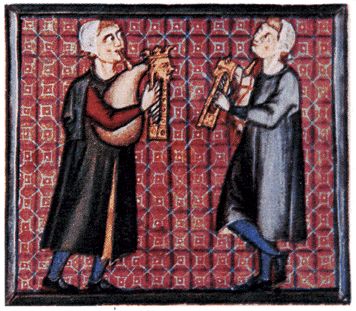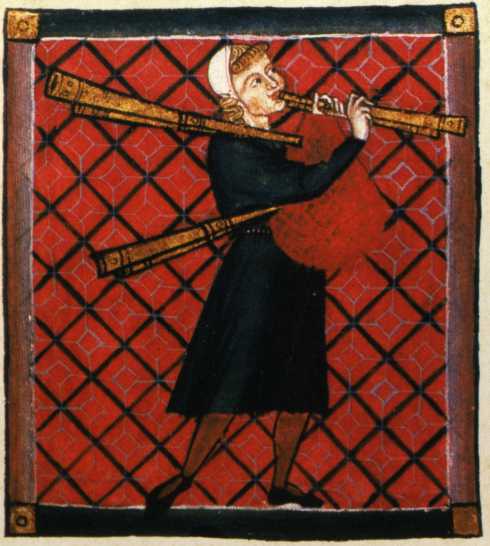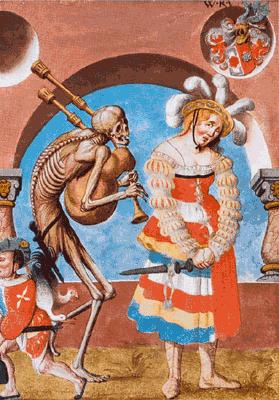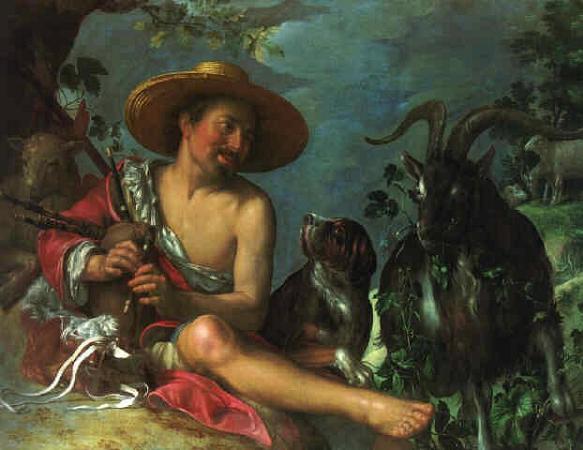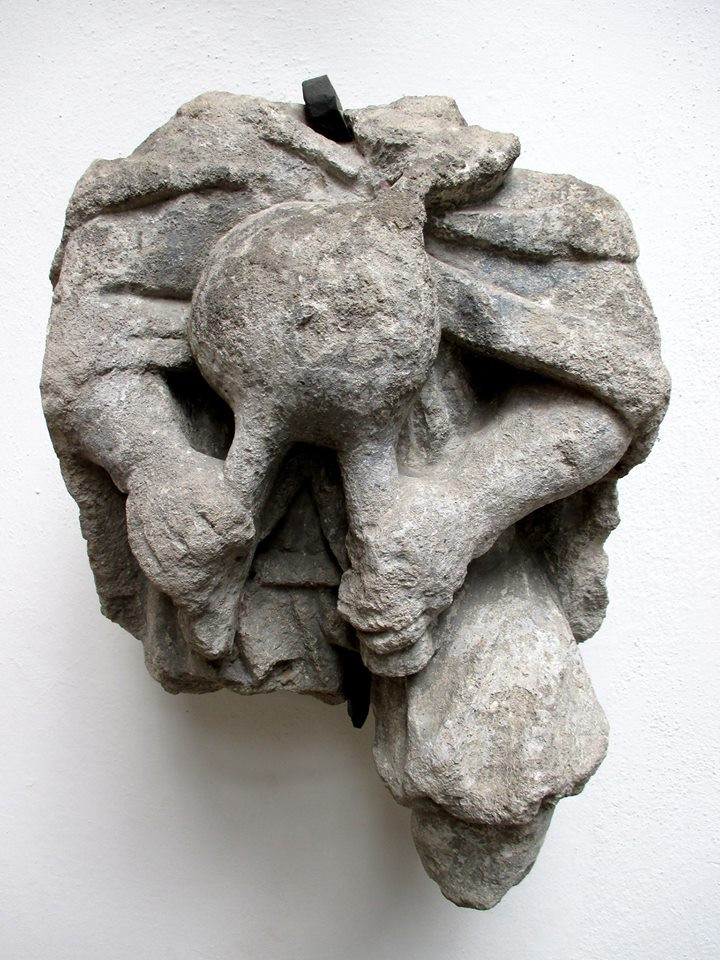In the galleries on this page you can see more or less faithful reconstructions of historical musical instruments according to the preserved iconographic records.
You can find some of these instruments in the collection of Miloslav Vaváček and you can see or hear them in his program called Bagpipes - an Instrument of Kings and Beggars.
You can find some of these instruments in the collection of Miloslav Vaváček and you can see or hear them in his program called Bagpipes - an Instrument of Kings and Beggars.
Royal Bagpipe Based on the Cantigas de Santa Maria
The Cantigas de Santa Maria (CSM) is a collection of 420 Marian songs from the 13th century. It was written during the reign of Alfonso X of Castile, called El sabio (the Wise) and has been preserved in four manuscripts, one of which is owned by the library at El Escorial Palace. It is richly decorated with miniatures of musicians with instruments and it is one of the most important organological sources of the Middle Ages.
The royal bagpipes have a short drone led parallel to the chanter and the two pipes come from a stock in the shape of a royal head.
The royal bagpipes have a short drone led parallel to the chanter and the two pipes come from a stock in the shape of a royal head.
